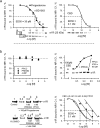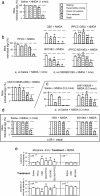Cannabidiol enhances morphine antinociception, diminishes NMDA-mediated seizures and reduces stroke damage via the sigma 1 receptor
- PMID: 30223868
- PMCID: PMC6142691
- DOI: 10.1186/s13041-018-0395-2
Cannabidiol enhances morphine antinociception, diminishes NMDA-mediated seizures and reduces stroke damage via the sigma 1 receptor
Abstract
Cannabidiol (CBD), the major non-psychotomimetic compound present in the Cannabis sativa plant, exhibits therapeutic potential for various human diseases, including chronic neurodegenerative diseases, such as Alzheimer's and Parkinson's, ischemic stroke, epilepsy and other convulsive syndromes, neuropsychiatric disorders, neuropathic allodynia and certain types of cancer. CBD does not bind directly to endocannabinoid receptors 1 and 2, and despite research efforts, its specific targets remain to be fully identified. Notably, sigma 1 receptor (σ1R) antagonists inhibit glutamate N-methyl-D-aspartate acid receptor (NMDAR) activity and display positive effects on most of the aforesaid diseases. Thus, we investigated the effects of CBD on three animal models in which NMDAR overactivity plays a critical role: opioid analgesia attenuation, NMDA-induced convulsive syndrome and ischemic stroke. In an in vitro assay, CBD disrupted the regulatory association of σ1R with the NR1 subunit of NMDAR, an effect shared by σ1R antagonists, such as BD1063 and progesterone, and prevented by σ1R agonists, such as 4-IBP, PPCC and PRE084. The in vivo administration of CBD or BD1063 enhanced morphine-evoked supraspinal antinociception, alleviated NMDA-induced convulsive syndrome, and reduced the infarct size caused by permanent unilateral middle cerebral artery occlusion. These positive effects of CBD were reduced by the σ1R agonists PRE084 and PPCC, and absent in σ1R-/- mice. Thus, CBD displays antagonist-like activity toward σ1R to reduce the negative effects of NMDAR overactivity in the abovementioned experimental situations.
Keywords: Acute pain; Cannabidiol; Cannabinoids; Epilepsy; NMDA receptor; Neuropathology; Sigma 1 receptor; Stroke.
Conflict of interest statement
Ethics approval
Protocol from animal studies were approved by Consejo Superior de Investigaciones Científicas (CSIC).
Consent for publication
Not applicable.
Competing interests
The authors declare that the research was conducted in the absence of any commercial or financial relationships that could be construed as a potential conflict of interest.
Publisher’s Note
Springer Nature remains neutral with regard to jurisdictional claims in published maps and institutional affiliations.
Figures




Similar articles
-
The calcium-sensitive Sigma-1 receptor prevents cannabinoids from provoking glutamate NMDA receptor hypofunction: implications in antinociception and psychotic diseases.Int J Neuropsychopharmacol. 2014 Dec;17(12):1943-55. doi: 10.1017/S1461145714000029. Epub 2014 Jan 31. Int J Neuropsychopharmacol. 2014. PMID: 24485144
-
The σ1 receptor engages the redox-regulated HINT1 protein to bring opioid analgesia under NMDA receptor negative control.Antioxid Redox Signal. 2015 Apr 1;22(10):799-818. doi: 10.1089/ars.2014.5993. Epub 2015 Feb 18. Antioxid Redox Signal. 2015. PMID: 25557043 Free PMC article.
-
Sigma-1 (σ₁) receptor deficiency reduces β-amyloid(25-35)-induced hippocampal neuronal cell death and cognitive deficits through suppressing phosphorylation of the NMDA receptor NR2B.Neuropharmacology. 2015 Feb;89:215-24. doi: 10.1016/j.neuropharm.2014.09.027. Epub 2014 Oct 5. Neuropharmacology. 2015. PMID: 25286118
-
Antinociception by Sigma-1 Receptor Antagonists: Central and Peripheral Effects.Adv Pharmacol. 2016;75:179-215. doi: 10.1016/bs.apha.2015.11.003. Epub 2016 Jan 27. Adv Pharmacol. 2016. PMID: 26920013 Review.
-
Therapeutic effects of cannabinoids in animal models of seizures, epilepsy, epileptogenesis, and epilepsy-related neuroprotection.Epilepsy Behav. 2017 May;70(Pt B):319-327. doi: 10.1016/j.yebeh.2016.11.006. Epub 2017 Feb 9. Epilepsy Behav. 2017. PMID: 28190698 Free PMC article. Review.
Cited by
-
Pharmacological Analysis of GABAA Receptor and Sigma1R Chaperone Interaction: Research Report I-Investigation of the Anxiolytic, Anticonvulsant and Hypnotic Effects of Allosteric GABAA Receptors' Ligands.Int J Mol Sci. 2023 May 31;24(11):9580. doi: 10.3390/ijms24119580. Int J Mol Sci. 2023. PMID: 37298532 Free PMC article.
-
Protective Effects of Cannabidivarin and Cannabigerol on Cells of the Blood-Brain Barrier Under Ischemic Conditions.Cannabis Cannabinoid Res. 2021 Aug;6(4):315-326. doi: 10.1089/can.2020.0159. Epub 2021 Mar 17. Cannabis Cannabinoid Res. 2021. PMID: 33998890 Free PMC article.
-
Molecular Interplay Between the Sigma-1 Receptor, Steroids, and Ion Channels.Front Pharmacol. 2019 Apr 24;10:419. doi: 10.3389/fphar.2019.00419. eCollection 2019. Front Pharmacol. 2019. PMID: 31068816 Free PMC article. Review.
-
Cannabinoids in the Management of Acute Pain: A Systematic Review and Meta-analysis.Cannabis Cannabinoid Res. 2020 Dec 15;5(4):290-297. doi: 10.1089/can.2019.0079. eCollection 2020. Cannabis Cannabinoid Res. 2020. PMID: 33381643 Free PMC article. Review.
-
The current understanding of the benefits, safety, and regulation of cannabidiol in consumer products.Food Chem Toxicol. 2021 Nov;157:112600. doi: 10.1016/j.fct.2021.112600. Epub 2021 Oct 6. Food Chem Toxicol. 2021. PMID: 34626752 Free PMC article. Review.
References
-
- Griffin G, Atkinson PJ, Showalter VM, Martin BR, Abood ME. Evaluation of cannabinoid receptor agonists and antagonists using the guanosine-5’-O-(3-[35S]thio)-triphosphate binding assay in rat cerebellar membranes. J Pharmacol Exp Ther. 1998;285:553–560. - PubMed
Publication types
MeSH terms
Substances
Grants and funding
LinkOut - more resources
Full Text Sources
Other Literature Sources
Medical

